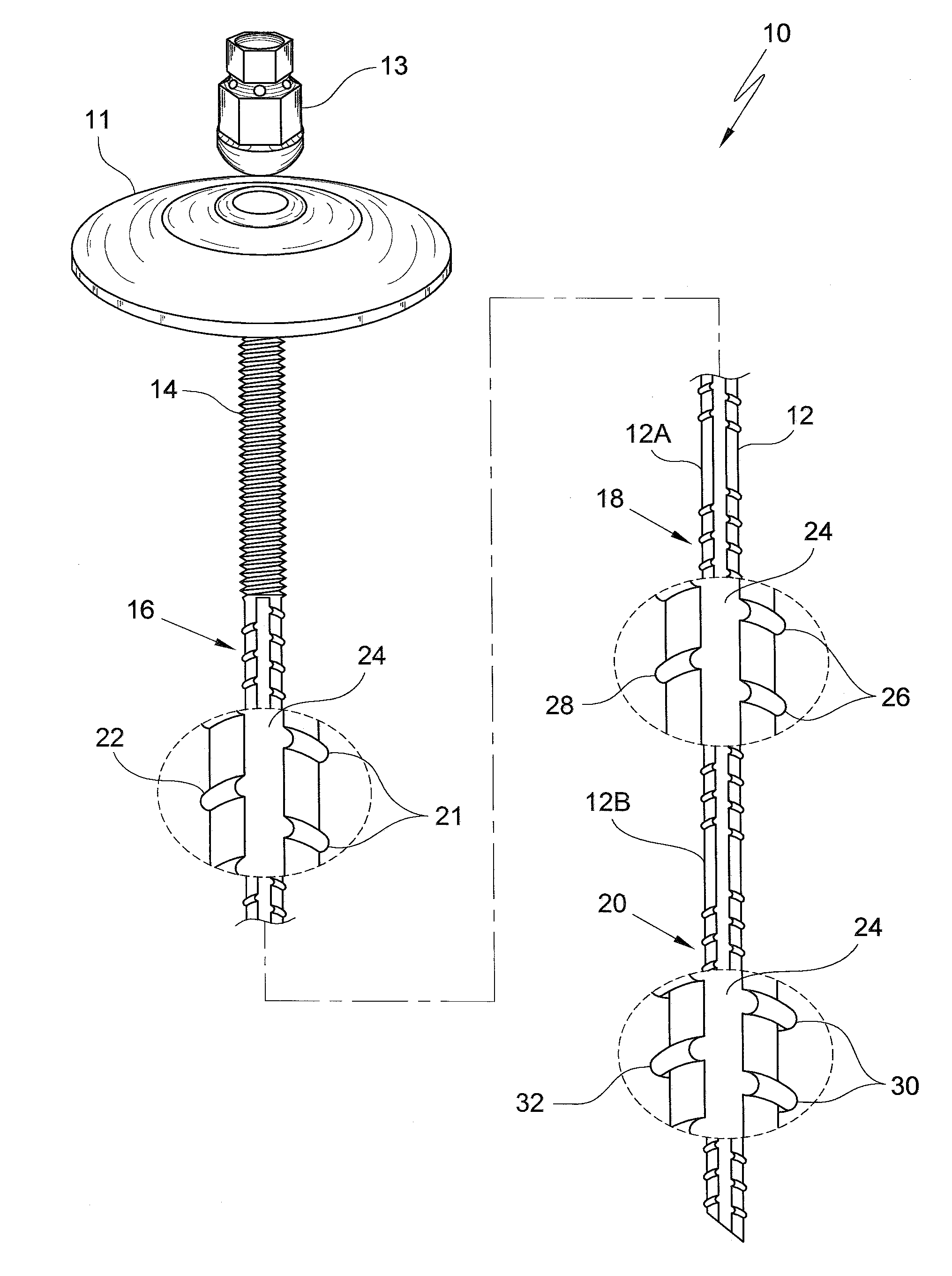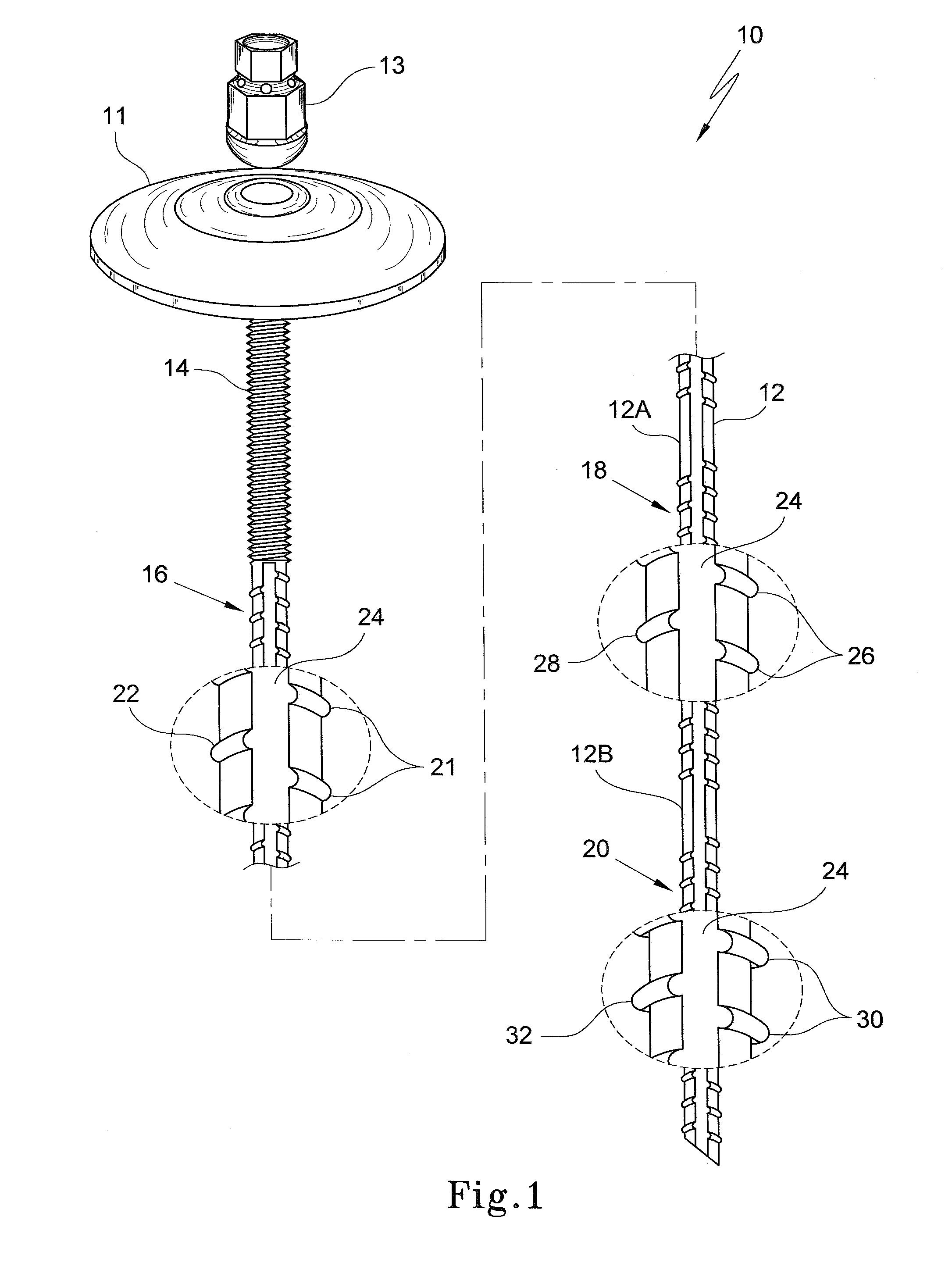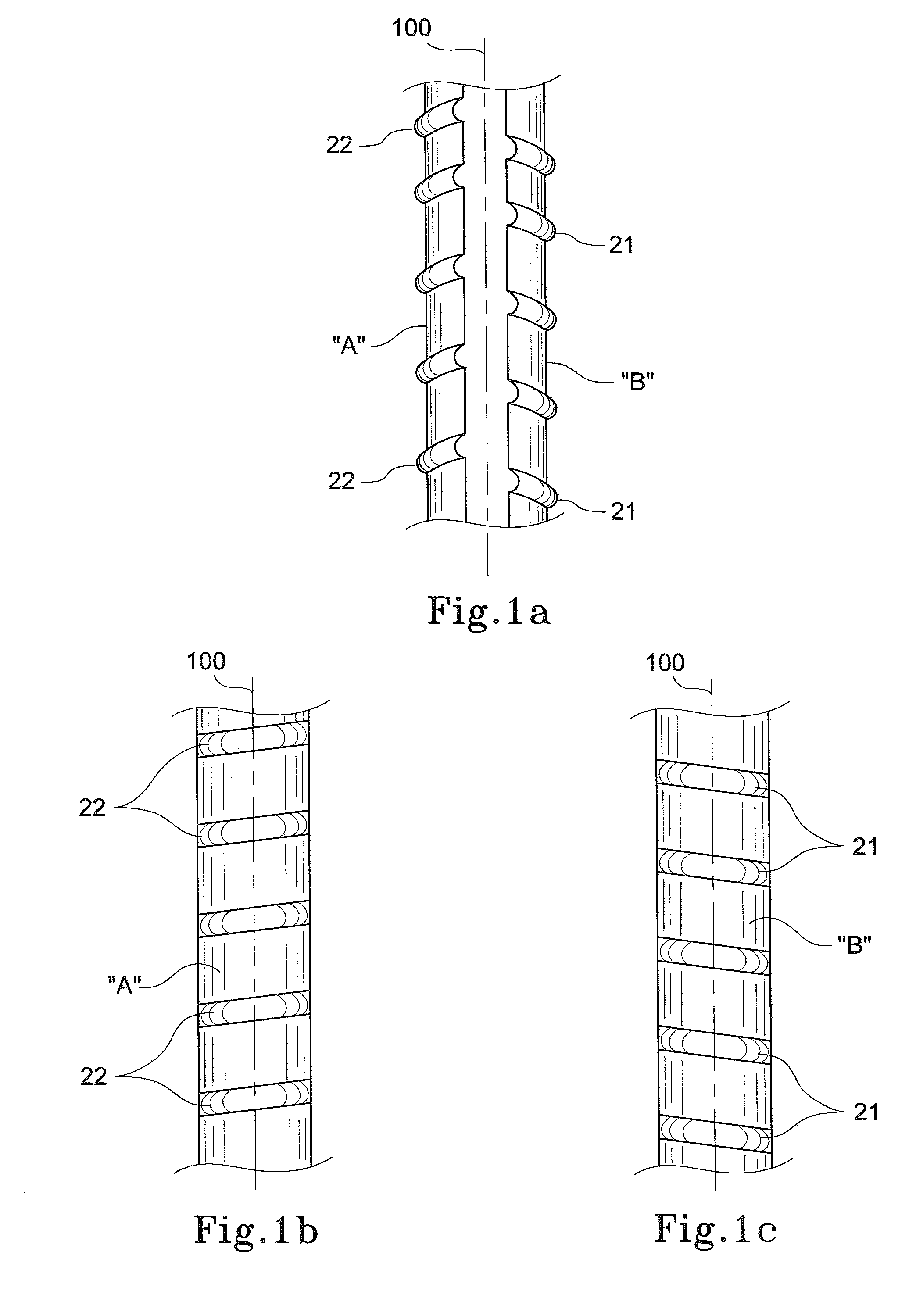Plastic rock-bolt or dowel
a technology of plastic rockbolts and dowels, which is applied in the direction of screws, nuts, dowels, etc., can solve the problems of inability to see if the encapsulation is adequate or successful, and the operator cannot see if the encapsulation is adequate or successful, and the cost of damage can be high
- Summary
- Abstract
- Description
- Claims
- Application Information
AI Technical Summary
Benefits of technology
Problems solved by technology
Method used
Image
Examples
Embodiment Construction
[0067]Referring to the drawings, FIG. 1 shows one side of a fibre-reinforced plastic (FRP) rock-dowel 10. A view of the rock-dowel from the opposite side is substantially identical. The rock-dowel has a dowel shank 12 having a diameter of about 20-22 mm, defining a longitudinal axis 12a (refer to FIG. 1a) and a threaded end 14 at the head or proximal end of the dowel. Three groups 16, 18 and 20 of projecting mixing vanes are spaced along the shank 12. Also shown in FIG. 1 is a washer plate 11 and a nut 13.
[0068]The vanes 20, 22 of the first group 16 of projecting mixing vanes adjacent the threaded portion 14, project approximately 0.5 mm-1 mm out from the dowel shank 12, most preferably about 1 mm. Vanes 20, 22 extend out from opposed sides of the dowel shank separated by diametrically opposed flattened portions 24 of the shank, of which only one is shown. The vanes 20 extending from one side of the shank are offset from those 22 extending from the opposite side of the shank.
[0069]W...
PUM
 Login to View More
Login to View More Abstract
Description
Claims
Application Information
 Login to View More
Login to View More - R&D
- Intellectual Property
- Life Sciences
- Materials
- Tech Scout
- Unparalleled Data Quality
- Higher Quality Content
- 60% Fewer Hallucinations
Browse by: Latest US Patents, China's latest patents, Technical Efficacy Thesaurus, Application Domain, Technology Topic, Popular Technical Reports.
© 2025 PatSnap. All rights reserved.Legal|Privacy policy|Modern Slavery Act Transparency Statement|Sitemap|About US| Contact US: help@patsnap.com



